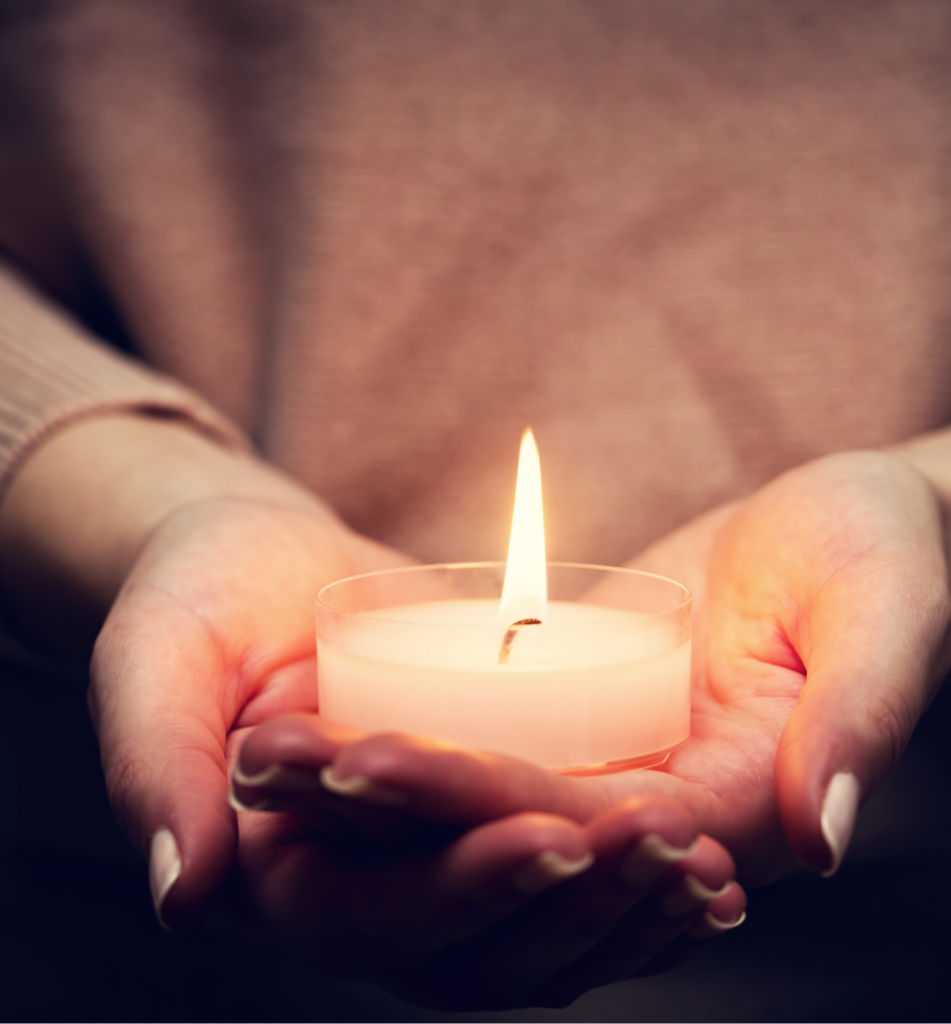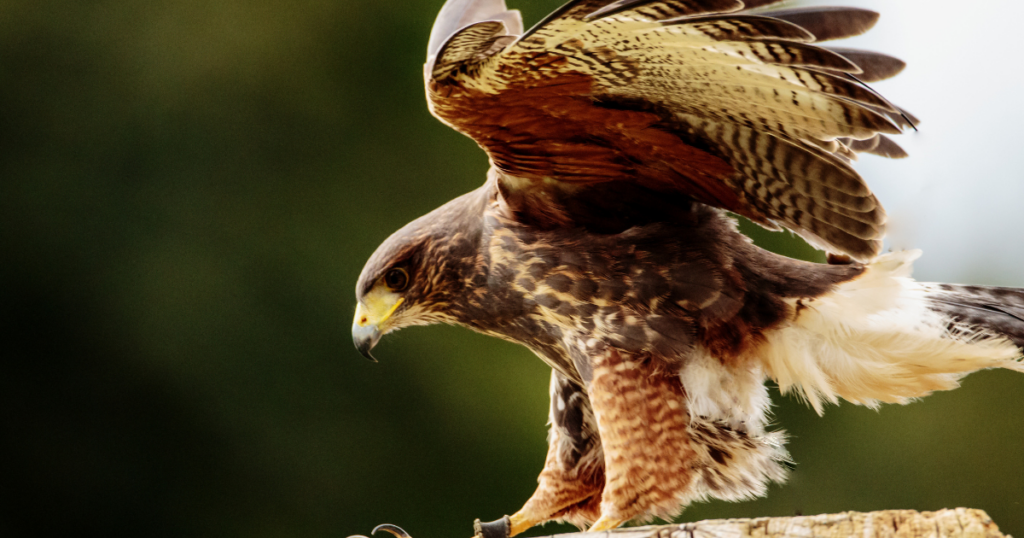When a hawk appears in the days and weeks after losing a loved one, it can feel like a powerful sign. The sight sends chills down our spines as we sense that the raptor carries a message from beyond.
But is there actually a deeper meaning to seeing a hawk after someone dies? If so, what is it?
While the hawk’s appearance is open to interpretation, it could symbolize the soul’s journey, an ongoing bond with the deceased, spiritual protection, or the need to gain a broader perspective.
For many people, a hawk sighting is a reminder to stay strong, seek wisdom, and know that their loved ones remain close. For others, it’s just a coincidence, as the bird population increases in urban areas.
Today, we’ll explore the consoling messages that hawks may send to those mourning a death. We’ll take a look at both mystical meanings and objective explanations for an encounter with this majestic bird.
Did you know that seeing other animals can also have spiritual meanings? You can read more about this in these articles birds keep flying into window spiritual meaning and tortoiseshell cat spiritual meaning.
3 Symbolic Meanings Behind a Hawk Sighting After Someone’s Death
Let’s jump right in with three potential meanings for those who lost a loved one recently.
1. Don’t Let the Grief Make You Forget the Big Picture

Odds are, you saw the hawk soaring up, almost like it’s flying into heaven. They’re known for their flying capabilities and iconic flaps, after all.
But did you know that these majestic birds also have incredible eyesight?
Believe it or not, hawks can easily spot objects (and prey) 100 feet away, and some of them can detect UV light. Plus, their field of view stretches over a whopping 280° with a binocular overlap of 40°. Imagine the precision!
Needless to say, their sight can be superior to ours.
With the birds’ keen vision and flying abilities in mind, some would say that a hawk symbolizes the need to look at the big picture after someone dies. In this case, the sighting could be a call to not let the broad perspective get lost in the grief.
The powerful bird’s visit might just remind us to remain calm amid chaos and focus on our long-term goals and true potential. Its presence confirms that we must balance our emotions to take the next healing steps.
That’s probably what the departed loved ones would have wanted for us, anyway.
2. Guidance and Connection With Your Departed Loved Ones

In ancient Egypt, the hawk was considered a sacred bird associated with Horus, depicted as a falcon-headed god.
In a way, all the kings were Horus. When one of them died, he was seen as a bird flying up to unite with the sun disk.
This symbolized guidance for the king’s soul. That’s why some folks take the hawk sighting after the death of a loved one to represent the soul being directed to the next realm by spirit guides.
But that’s not all—there was also the concept of the Ba-Bird.
We won’t dig too deep into the details, but Ba was depicted as a bird with a human head—yes, that’s kind of the opposite of Horus’ description. While it isn’t clear which bird species Ba’s body was, it often had features of a sparrowhawk or a small falcon.
Now, you might think that Ba represents the soul. However, it captured the full range of the deceased’s qualities. So, it was a more comprehensive concept.
Anyway, Ba was believed to appear after death and just before resurrection. Then, it could change its shape, move around, and then return to the body. The bird was also believed to live on to eternity.
So, a hawk sighting could remind people in modern times that their bond with the departed remains unbroken.
3. Hope for Protection and Spiritual Awareness

For some Native American tribes, the hawk is revered as an important spiritual sign of strength and protection. However, this symbolism can go either way.
How? Well, in Native American culture, dreaming about hawks can be seen as a warning of impending danger. After all, the birds are often thought of as guardians that ward off threats and enemies.
Today, however, when people see a hawk shortly after losing a loved one, the message they take away is often positive. They may interpret it as a sign that their deceased friend or family member is watching over them from the afterlife.
The hovering presence of a hawk near someone grieving a loss seems to imply they are under gentle, caring spiritual protection during an emotionally difficult transition.
Yet, there might be an air of caution along with this positive message.
It’s as if the hawk is telling the grieving person to stay alert. The hawk sighting could remind the griever to keep their eyes wide open as new opportunities and possibilities are just around the corner on their path forward.
Even in the midst of profound grief, the world continues. The hawk’s appearance emphasizes that one must continue living with awareness and hope despite the loss.
Related: what does seeing an eagle mean spiritually?
Are There Other Messages that the Hawk Sighting Could Carry?
Yes! We tried to gather the top interpretations, but seeing hawks after someone dies can have diverse spiritual meanings.
Don’t forget that these sightings are deeply personal experiences, and there’s no one universal explanation.
Some may see the hawks as a representation of their loved one’s enduring spirit or as powerful symbols of hope and rebirth. After a tragic loss, a hawk’s appearance could bring reassurance that might just encourage personal growth through a difficult time.
The hawk is also considered a spiritual messenger. So, others may ponder what message the deceased would communicate through the visiting hawk based on current struggles. It all depends on your relationship with the departed one and your current state of mind.
Are Hawk Sightings Rare? Why Does Rarity Matter?
When interpreting the potential symbolism behind the sighting, it’s helpful to understand how common or rare hawk encounters are in your area.
If the sightings are rare events in real life, the hawk symbolism may feel more significant. To check, you can always refer to the updated sighting maps.
For instance, seeing a red-tailed hawk is fairly common in many regions. That’s because it’s one of the most widespread hawk species in North America. Cooper’s hawks are also popular.
But there’s more to consider.
Interestingly, research shows that hawk sightings are becoming more prevalent over time in certain urban and suburban areas.
How prevalent, you ask? Well, let’s look at the numbers.
A study by the Cornell Lab of Ornithology looked at over 20 years of data from the greater Chicago area. Initially, about 26% of feeders had visits from accipiters (true hawks). By 2016, the estimate went up to around 60%!
It appears that urban adaptation and growing prey availability from abundant backyard feeder birds have led to increasing hawk populations in some cities.
So, hawk sightings that may have been rare in the past are now relatively more common.
How to Verify That What You Saw Was a Hawk
If you spot a large bird gliding through the sky and think it might be a hawk, you might rush and hold on to one interpretation. However, we’d recommend confirming that initial identification first.
The tricky part here is that the “hawk” label is applied loosely to several diurnal birds of prey. While true hawks belong to the taxonomic family Accipitridae, several species are also lumped under the same umbrella.
This means that these birds come in different silhouettes and flight patterns.
All in all, you need to look out for a few main categories. Here’s a quick breakdown of their descriptions:
- Buteos: Those usually have broad wings, but their flight consists of slow, labored flaps. Take the red-tailed and ferruginous hawks, for instance.
- Accipiters: This category includes sharp-shinned and Cooper’s hawks with their rounded wings and long tails. Those are known for flapping in bursts with brief glides.
- Falcons: These slender birds have long, pointed wings. Think Merlins or pigeon hawks.
As you can see, examining a bird’s silhouette, wing structure, and tail shape provides vital clues. Unfortunately, this is easier said than done, especially with brief sightings.
So, let’s hope you get a second (or even third) sighting to get a really good look at the bird!
Final Thoughts
Though each person’s interpretation differs, common insights tend to present the hawk as a bridge between this world and the next.
For some people, seeing a hawk after losing a loved one can represent spiritual guidance and protection.
However, the bird’s flying pattern and sharp vision are too significant to ignore while trying to interpret the sighting. You could take it as a signal that you need to change your perspective instead of letting grief take over.
There’s no denying that the pain of loss persists for years. Yet, the visit from this majestic bird could assure you that this difficult time shall pass. That’s the message we lean towards the most!
I am a Psychic Medium with over 20 years experience. See my website below for more info and testimonials. Please e-mail me at info@emmakinsey.com for enquiries


